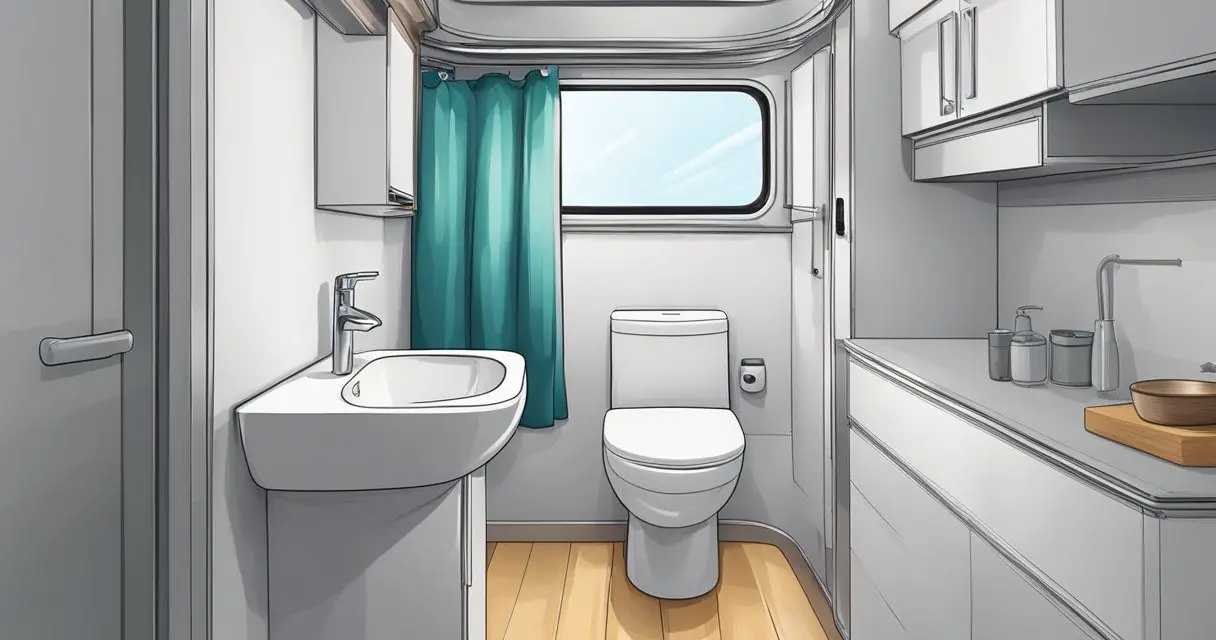Would you like to save this article?
RV enthusiasts are always on the lookout for ways to improve their travel experience. One innovation gaining popularity among campers is the composting toilet. This eco-friendly alternative to traditional RV toilets offers several advantages worth considering.
However, among our readers, only 6% of you have these.
Composting toilets in RVs separate liquid and solid waste, allowing for easier disposal and reduced odor. These waterless systems can extend boondocking capabilities and eliminate the need for frequent black tank dumps. For RV owners seeking more freedom and sustainability on the road, a composting toilet may be the solution they’ve been searching for.
1) Reduces Water Usage Significantly
RV composting toilets offer a major advantage in water conservation. Traditional RV toilets use 1-3 gallons per flush, while composting toilets require no water at all for flushing.
This water-free operation can save thousands of gallons annually. For a family of two, the savings can amount to over 4,000 gallons of water each year.
The reduced water usage is especially beneficial when camping in areas with limited water access. It allows RVers to extend their trips without worrying about refilling water tanks as frequently.
Conserving water also helps protect natural resources, particularly in drought-prone regions. By choosing a composting toilet, RV owners contribute to environmental preservation efforts.
The water savings extend beyond just toilet use. With less water needed for flushing, RVers can allocate more water for other essential tasks like cooking, cleaning, and showering.
2) No Dump Stations Needed
RV composting toilets offer a liberating experience for campers and travelers. With these eco-friendly systems, the need for traditional dump stations becomes a thing of the past.
Campers can enjoy extended stays in remote locations without worrying about finding a place to empty their black water tanks. This freedom allows for more spontaneous travel plans and longer stays in beautiful, off-grid areas.
The solid waste compartment in composting toilets typically requires emptying only every few weeks, depending on usage. When it’s time to empty, the contents can be safely disposed of in regular trash bins.
Liquid waste is collected separately and can be emptied more frequently in various locations, including public restrooms or even directly onto the ground in appropriate areas. This flexibility eliminates the stress of locating RV-specific dump stations.
By removing the need for dump stations, RV owners save time and hassle during their trips. They can focus more on enjoying their adventures and less on waste management logistics.
3) Eco-Friendly Waste Management
RV composting toilets offer a greener approach to waste management. These innovative systems break down solid waste into compost-like material through natural decomposition processes.
By using organic materials such as peat moss or coconut coir, composting toilets create an environment for aerobic bacteria to thrive. These microorganisms efficiently break down waste, reducing its volume and environmental impact.
Composting toilets significantly decrease water usage compared to traditional RV toilets. This conservation of water is especially beneficial for those who enjoy boondocking or camping in areas with limited resources.
The end product of a well-maintained composting toilet is a nutrient-rich material that can be safely disposed of or used as fertilizer in non-food gardens. This cycle of waste-to-resource aligns perfectly with eco-conscious RV living.
By eliminating the need for chemical additives often used in conventional RV toilets, composting systems further reduce environmental harm. They also minimize the risk of accidental spills or leaks that could contaminate natural surroundings.
4) Odor-Free Experience
Composting toilets in RVs offer a surprisingly odor-free experience. This benefit often surprises many first-time users who expect unpleasant smells.
The secret lies in the separation of liquid and solid waste. By keeping these two components apart, the toilet prevents the formation of ammonia, which is responsible for most toilet odors.
Composting toilets also use materials like peat moss or coconut coir. These act as bulking agents, absorbing moisture and helping to neutralize any potential smells.
Proper ventilation systems in these toilets further contribute to odor control. Many models come with built-in fans that continuously circulate air, keeping the interior fresh.
Regular maintenance plays a crucial role too. Emptying the liquid container frequently and ensuring the right moisture balance in the solids bin helps prevent any odor buildup.
With these features, RV owners can enjoy their travels without worrying about unpleasant bathroom smells. It’s a comfort that enhances the overall RV living experience.
5) Minimal Maintenance Required
RV composting toilets require much less maintenance than traditional RV toilets. There’s no need for frequent emptying of a black water tank or dealing with sewage chemicals.
The solid waste compartment typically only needs emptying every few weeks for a couple using the RV full-time. Liquid waste may need more frequent emptying, but it’s a simple process.
Regular cleaning involves wiping down surfaces with natural cleaners. No harsh chemicals are needed, saving money on specialized products.
There are no complex mechanical parts to break down or replace. This means fewer repair costs and less time spent on upkeep.
Users don’t have to worry about clogged pipes or broken sensors. The simple design of composting toilets eliminates many common maintenance issues found in traditional RV plumbing systems.
Composting toilets can save RV owners $150-200 annually on maintenance costs compared to conventional systems. This includes savings on chemicals, cleaning products, and potential repairs.
With minimal water usage, there’s less strain on the RV’s plumbing system. This can lead to fewer leaks and plumbing issues over time.






